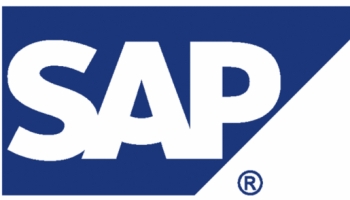

Since SAP named Bill McDermott and Jim Hagermann Snabe co-CEOs in February industry analysts and media have been speculating whether the new management regime would be able to reverse the sales and profit slowdown that had deviled the enterprise software company in 2009.
The answer came on 28 April when SAP reported double digit sales and operating profit growth in the company’s 2010 first quarter.
“Our double-digit growth was solid, driven by an increase in software revenues in all key regions, said McDermott in introducing the quarterly results in a 28 April Conference Call. It also showed strong growth in most of SAP’s market segments, including “Our established markets, our fast growing markets and in key segments of business user, and small and mid-sized enterprises,” McDermott said.
Under International Financial Reporting Standards (IFRS) SAP’s Software and Software Related Services Revenue [SSRS] totaled 1.95 billion Euros a 12 percent increase over the year ago quarter. Software revenue by itself totaled 464 million Euros, an 11 percent increase. Operating profit margin rose to 22 percent in the 2010 first quarter compared to 12.9 percent in the year ago quarter.
McDermott noted that software support revenue increased sequentially by nearly 2 percent in the quarter, which was an indication that the “vast majority of our existing and new customers are choosing enterprise support as they clearly prefer this support option.”
Resistance to the terms and cost of SAP’s enterprise support plan is what contributed to the decline in revenue and profits that SAP experienced in 2009, which was a major factor in the decision in February to replace former CEO Leo Apotheker with McDermott and Hagermann Snabe. Last year SAP increased the cost of enterprise support to 18.3 percent of net licensing fees and customers continually pressed SAP to show that enterprise support was worth the cost.
This year SAP told customers that it would not increase the cost of enterprise support and this factor along with improving business activity apparently convinced customers to buy the enterprise support plans.
At the earnings conference McDermott said that “enterprise support is so well received globally, nearly all of our customers have opted for this option. This helped boost top line SSRS gross margin increased by a .7 percentage point year over year to 81.6 percent, McDermott said. This produced an overall SAP gross margin of 67.7 percent, which is up 3.3 percentage points year over year, he said.
McDermott said tight controls on expenses also helped SAP boost profit margins. These expense controls included keeping staffing levels essentially flat for the past quarter. Hagermann Snabe said that SAP would continue to keep a tight rein on hiring, but the company had no plans to cut jobs in the upcoming quarters.
Meanwhile, Hagermann Snabe and McDermott said they are seeing clear signs that the global economy has turned the corner toward improved growth.
“We have strong [sales] pipeline for Q2 and for the remaining quarters. There is a strong momentum in key growth markets and categories,” McDermott said, that will keep SAP growing in 2010.
“We see a huge change of the strategic agenda of our customers,” Hagermann Snabe said. “While tight cost control remains important to all companies and all industries we see clear signs that growth in back on the agenda,” he said.
SAP’s plan for the rest of this year is to keep pushing development and marketing in three key application sectors, on-premise, on demand and on mobile devices, said Hagermann Snabe.
“While we expect the major parts of business applications to remain on premise, we do believe that software-as-a-service will be growing rapidly in the years ahead,” he said.
In the on-demand field, Hagermann Snabe said “we continue to be confident that we will deliver SAP Business ByDesign in a volume ready version” in the middle of this year.
Business ByDesign, Hagermann Snabe said is “the most important innovation from SAP for the on-demand market. We have worked hard on the technology platform and SAP business ByDesign is not just a me-too [platform], but in fact is a next generation on demand platform. We believe there is an opportunity to disrupt the on-demand market based on this platform.”
However, SAP continues to believe that most of its customers will continue to purchase and maintain its on-premise Enterprise Resource Planning applications. As a result, SAP will continue to develop and enhance its on premise Business Suite 7 platform.
American think tank warns about possible threat to US defence, after China imposes rare earth…
China is reportedly pursuing three alleged US NSA operatives, after cyberattacks on Chinese infrastructure
Chip making giant ASML mirrors other equipment makers, and outlines financial impact of Donald Trump's…
AI is transforming cybersecurity, offering faster defence and smarter attacks. Learn how businesses can harness…
Search engine giant being sued for £5 billion ($6.64 billion) damages over allegations for online…
H20 chip designed for Chinese market now requires special export licence, as Trump Administration tightens…